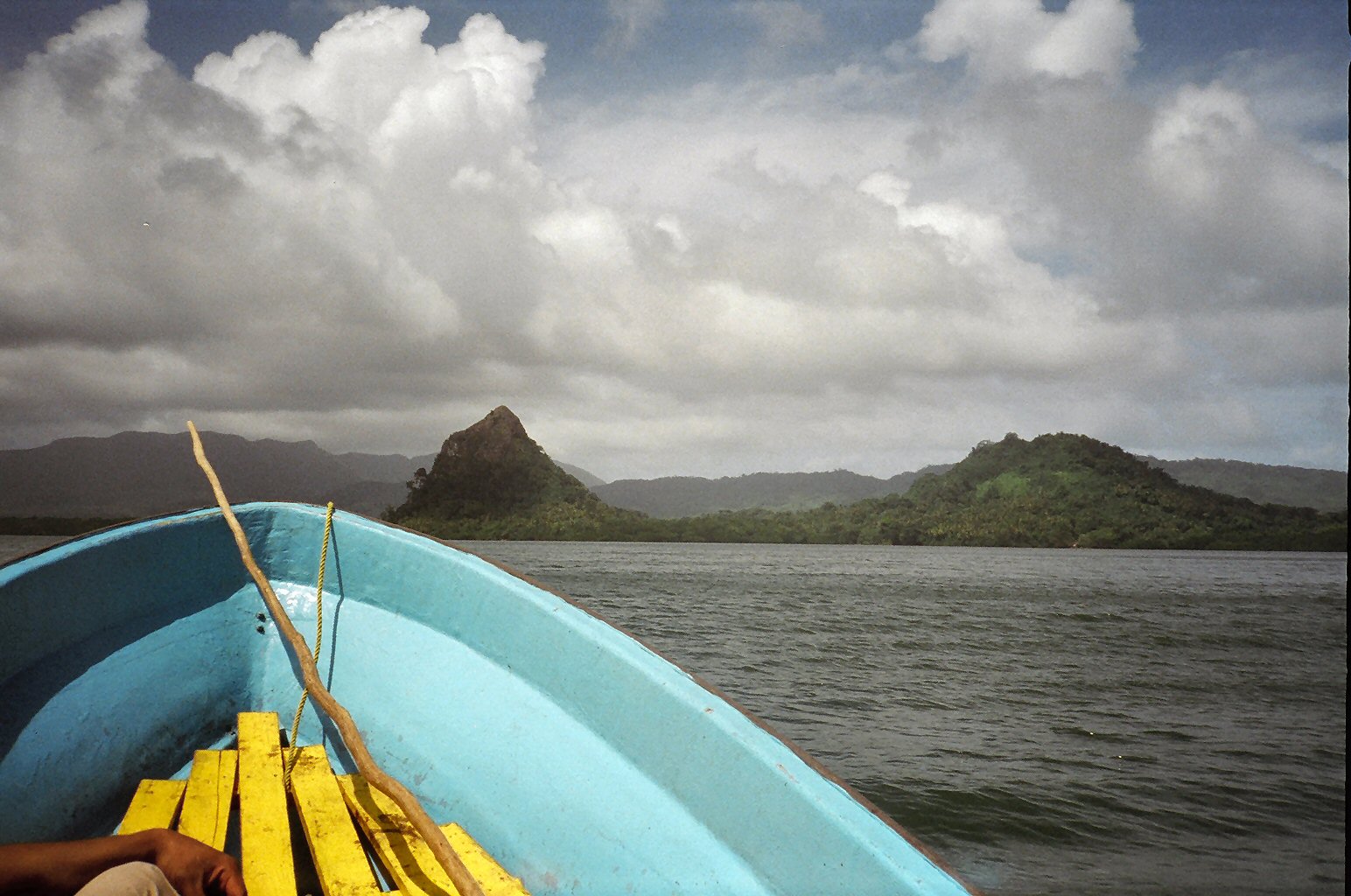
“Where America’s day begins”
Guam is a United States territory in the western Pacific, on the other side of the dateline and a long way away from the rest of the country. It hosts large military bases, it appeared to me to have lots of fast-food outlets relative to its size, and petrol was (in 1999) relatively cheap. Getting there for me was a circuitous adventure, but for many others, it was only a few hours’ flight from major cities in Japan. Tourism.
I’m not sure what I was expecting, and my short stay barely scratched the surface, but Americanisation and tourism had imported lots of modern conveniences. The main tourist centre on Guam has a good beach – Tumon Bay. The swimming there was good, the water calm and clear, but it was commercialised.
To find another side of Guam, I hired a car, braved American 4-way stop signs (what is it with those?? who goes first??) in a left-hand drive, and drove around the south of the island. In the gallery are some photos of rural Guam – where fewer tourists ventured, and the resorts were left behind.
Spain was the first colonial power in Micronesia. The Spanish possessed the Philippines, Guam and the Mariana Islands and many Micronesian islands. After the American-Spanish war, the Americans took possession of Guam, and still hold onto it today. There are still reminders of the Spanish colonial days in Guam. In central Agana, there are the remains of the colonial administration. And around the island, other ruins are still visible – there are photos in the gallery of:
- The Chocolate House, central Agana
- Plaza de Espana wall, central Agana
- Taleyfac Bridge, built by the Spanish, in southern Guam
- The remains of Fort Soledad, Umatac
Attribution: Flag icon made by Freepik from www.flaticon.com





























